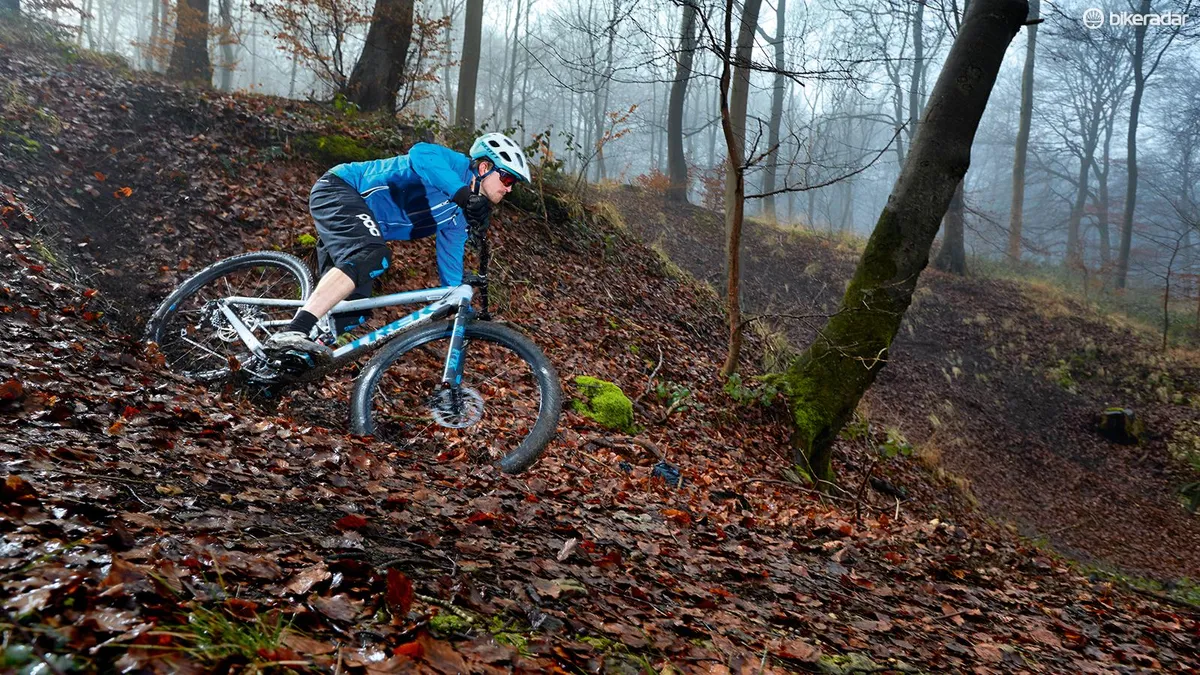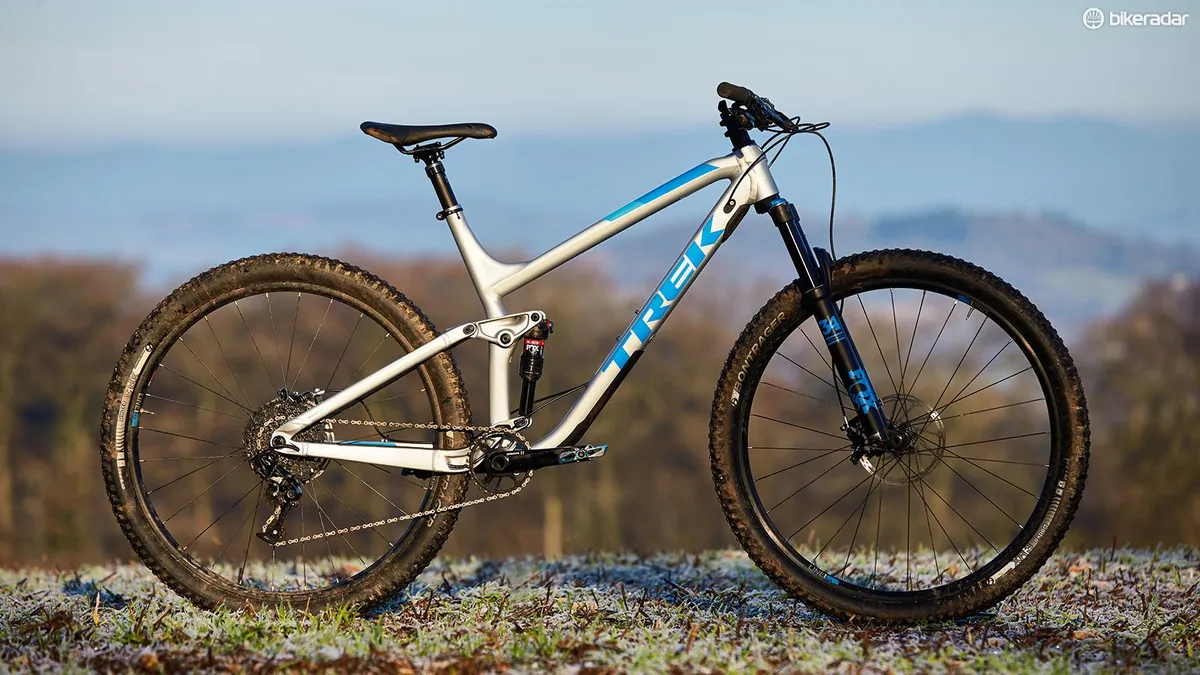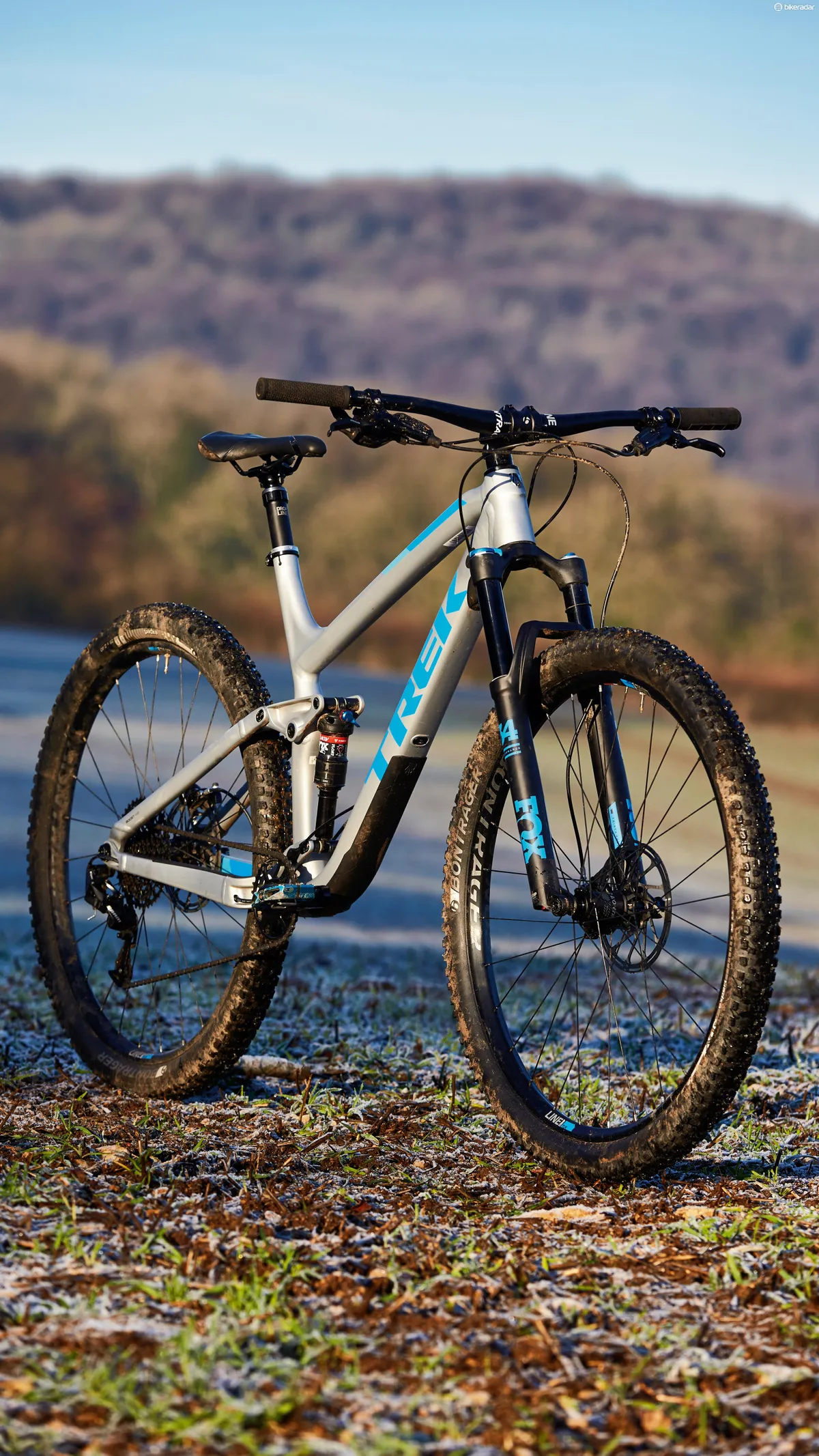Trek’s trail 29er sports 130mm travel at each end. There’s a carbon version for the same price, but I opted for the alloy bike due to the lure of posher parts.
Trek’s ‘ABP’ (Active Braking Pivot) suspension design puts the rearmost pivot concentric with the wheel axle, rather than on the chainstay. As with Horst Link bikes, such as the Specialized Camber Comp Carbon 29, the rear brake caliper is mounted on the seatstay, so braking forces don’t interfere with the suspension as much as on a traditional single-pivot design.

The frame has a straight down tube, which is claimed to boost stiffness but would normally be in the path of the front wheel. Trek’s ‘Knock Block’ system limits how far the bar can turn, to stop the fork crown contacting the frame. This reduced steering lock isn’t usually noticeable when riding — just don’t try any barspins!
Included in the solid spec is a sensible 760x65mm cockpit, wide Bontrager wheels, SRAM X1 gearing and Guide RS brakes. The Fox shock uses Trek’s Formula One-inspired RE:aktiv damping tune, which is claimed to improve pedalling.
Trek Fuel EX 9 29 ride impression
The Fuel EX needs that clever damping tech. Pedalling stood up with the shock in ‘open’ mode results in a fair amount of bob.
Add a tough, wide wheelset and stiff frame, and the Fuel EX rewards you for chucking it down rocky chutes and stuffing it into corners
Flipping to ‘medium’ cuts down on this a fair bit, and large bumps are absorbed almost as if the shock had been left fully open. This is because of the RE:aktiv tune, which offers quite firm low-speed compression damping, particularly in the ‘medium’ and ‘firm’ modes, but allows the valves to pop open under harder impacts.
While this is handy for pedally descents and technical climbs, it’s not quite the best of both worlds. When sprinting, the firmest mode still permits a little bob, while in the ‘medium’ setting, the shock feels slightly insensitive. Left ‘open’, the suspension performs pretty well over rough ground and absorbs big hits nicely.
The fork’s GRIP damper is less responsive to trail chatter than more expensive units found on bikes such as the Norco Optic C9.2 too, so when battering over really bumpy ground, the 130mm Trek wasn’t quite as smooth as I’d hoped.
Although the cockpit is relatively well-proportioned, I’d fit a shorter stem to get the most out of the long reach, as the Fuel EX felt a touch stretched-out on steep descents. The tyres lack bite in corners too.

SRAM’s Guide RS brakes performed well, helping to push the Trek’s trail chaos confidence.
I used the ‘low’ geometry setting for most of my testing, which gave a confidence-inspiring ride. With a 67-degree head angle and fairly long front centre, the Trek felt like a capable and stable descender.
Add a tough, wide wheelset and stiff frame, and the Fuel EX rewards you for chucking it down rocky chutes and stuffing it into corners.
At 13.9kg it’s on the heavy side, and it’s got the stiff gearing too, making steep, sustained climbs a bit of a chore. More importantly, the ‘low’ setting results in a 74.5-degree effective seat angle. Although this is steeper than bikes such as the Canyon Neuron AL, I found it a little too laidback for attacking technical climbs. Switching to the ‘high’ setting helps, but this also raises the BB and steepens the head angle, losing the Fuel EX its descending edge.
Although it’s not the fastest climber, it’s no slouch. The fast-rolling, high-volume tyres carry speed exceptionally well. With the shock in the firmer settings, it responds well to pumping and pedalling efforts, too. It bowls along flowing trails effortlessly and really comes alive when pointed downhill.


